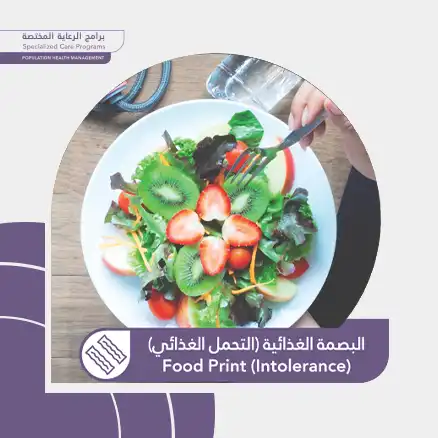
Al Borg Diagnostics
How is a food intolerance test performed?
It is essential to know that the term food intolerance differs from a food allergy, despite the similarity in symptoms between the two conditions. However, the symptoms of food intolerance take longer to appear in the patient.
It is worth mentioning that food allergy occurs due to the immune system’s reaction to a specific type of food, while food intolerance is more related to digestive problems. In this article, we will focus on discussing a test that detects food intolerance: (1)
How is a food intolerance test performed?
A food intolerance test is a method doctors and nutrition specialists use when an individual experiences difficulty digesting specific foods or certain components of foods or when digestive disorders occur after consuming certain foods. These disorders may include bloating, gas, diarrhea, and stomach pain. (2)(3)
As for the process of conducting the analysis, it involves a series of different tests. This analysis is complex because some individuals may have a food intolerance to multiple types of food. Here are the details:
Following a special diet
This step includes the following procedures: (2)(3)
- If the doctor suspects the patient is suffering from food intolerance, they will refer the patient to a nutrition specialist.
- The nutrition specialist initially asks the patient to write a food diary that includes the foods they consume and the timing of consumption. The patient is also asked to record the symptoms they experience along with a detailed description.
- The specialist attempts to identify a correlation between the observed symptoms and the specific type of food causing them based on this food diary.
- They develop a personalized dietary plan for the patient, which avoids the food items that trigger the symptoms.
- The patient is monitored for a few weeks to determine if the symptoms disappear.
- The specialist may sometimes ask the patient to repeat eating the previously avoided food items and monitor the return of symptoms. This is done to confirm the association between those specific food items and food intolerance.
Please note that this is a general explanation of the process, and the specific methods and tests used may vary depending on the healthcare provider and the individual case.
Immunological Blood Tests
One of the Hungarian methods for analyzing food intolerance is immunological blood tests that detect levels of immunoglobulin G (IgG) antibodies. The process involves the following steps: (4)(6)
- A blood sample is drawn from a vein in the arm.
- The blood sample is exposed to various food types suspected to cause food intolerance.
- The levels of immunoglobulin G (IgG) antibodies are measured.
- They are identifying the specific food items causing food intolerance.
It is worth noting that this test can be conducted for different types of food, providing precise and detailed information about an individual’s food intolerance.
Other Tests
No specific tests are available for all types of food intolerance; for example, gluten or histamine intolerance tests are not available. On the other hand, there are some tests available to detect different types of intolerance:
- The lactose Intolerance Test involves the individual drinking lactose solution and then breathing it into a container every 30 minutes, continuing for several hours. If the test reveals high levels of hydrogen, it is associated with lactose intolerance.
- Kinesiology Tests: This test is based on movement science, as it is expected that food intolerance can disrupt the body’s energy balance, leading to disturbances in muscle response.
- Pulse Test: This test measures the heart rate before consuming the suspected food, then measures it again after consuming it for 15 minutes. It is believed that an increased pulse rate may be associated with food intolerance.
For more information about these tests, you can visit any laboratories offering food intolerance analysis, such as Al-Borg Diagnostics. In addition, they provide a distinctive package for individual food intolerance test, along with a wide range of other tests and packages conducted by distinguished and trained medical staff.
Common Foods Associated with Food Intolerance
After highlighting the critical information about food intolerance analysis, it is worth mentioning that this analysis is associated with some everyday food items, such as: (3)
- Milk and dairy products.
- Gluten.
- Caffeine.
- Citrus fruits.
- Avocado.
- Smoked fish.
References:
- https://www.medicalnewstoday.com/articles/263967#how_common
- https://www.nhs.uk/conditions/food-intolerance/#:~:text=A%20food%20intolerance%20is%20caused,such%20as%20cheese%20and%20yoghurts.
- https://www.healthline.com/nutrition/common-food-intolerances
- https://www.womenshealthmag.com/uk/food/healthy-eating/a708294/food-intolerance-test/
- https://my.clevelandclinic.org/health/diseases/21688-food-intolerance#diagnosis-and-tests
- https://www.bda.uk.com/resource/food-allergy-intolerance-testing.html#:~:text=IgG%20blood%20test,do%20not%20show%20any%20symptoms.
Check your health with
Food Print (Intolerance)




